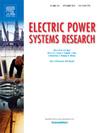Multi-purpose control of bidirectional converters for power management in hybrid microgrids considering electric vehicles
IF 3.3
3区 工程技术
Q2 ENGINEERING, ELECTRICAL & ELECTRONIC
引用次数: 0
Abstract
Hybrid microgrids (HMGs) are impacted by a wide range of operational issues, which can lead to technical challenges for these systems. Power management and power sharing accuracy remain two major concerns due to lack of appropriate control strategies for bidirectional DC-DC converters (BDCs), which transfer power between distributed generations (DGs), such as electric vehicles (EVs), and HMGs. Similarly, interlinking converters (ICs), which are essential for power exchange between the AC and DC sides, can further intensify this challenge. Such deficiencies can pose threats to efficient operation of HMGs. To address these issues, this paper proposes a 3-D droop-based control scheme for BDCs, designed to coordinate the performance of both EVs and BDCs on the DC side. This approach ensures accurate power sharing between BDCs despite unequal line resistances and enhances the overall power management of the HMG by involving EVs in meeting the load demand. Additionally, a novel approach for decoupling the charging and discharging modes of the EVs is introduced to eliminate circulating power among parallel BDCs. Consequently, BDC losses will be minimized, and their operational capacity remains unburdened, as unnecessary performance is avoided. Furthermore, a multi-purpose IC, formed by integrating a conventional single-stage IC with an adjustable distribution static synchronous compensator (DSTATCOM), equipped with a coordinated 3-D droop control is suggested. This not only facilitates the AC side voltage regulation (VR) through optimal reactive power compensation, but also ensures accurate reactive power sharing among parallel ICs. To accomplish this, the capacitance of the DC-link of the DSTATCOM is optimized by precisely tuning the proposed 3-D droop gains of the IC. The effectiveness of this control strategy is demonstrated and compared with other methods in the literature using an HMG testbed.
混合微电网(HMGs)受到各种运行问题的影响,这可能导致这些系统面临技术挑战。由于在分布式发电(DG)(如电动汽车(EV))和混合微电网(HMG)之间传输电力的双向直流-直流转换器(BDC)缺乏适当的控制策略,电力管理和电力共享精度仍然是两大主要问题。同样,对交流侧和直流侧电力交换至关重要的互联变流器(IC)也会进一步加剧这一挑战。这些缺陷会对重型发电机组的高效运行构成威胁。为解决这些问题,本文提出了一种基于 3-D droop 的 BDC 控制方案,旨在协调直流侧电动汽车和 BDC 的性能。这种方法可在线路电阻不等的情况下确保 BDC 之间的精确功率共享,并通过让电动汽车参与满足负载需求来增强 HMG 的整体功率管理。此外,还引入了一种新方法来解耦电动汽车的充电和放电模式,以消除并联 BDC 之间的循环功率。因此,由于避免了不必要的性能,BDC 的损耗将降到最低,其运行能力也不会受到影响。此外,还提出了一种多用途集成电路,它将传统的单级集成电路与可调配电静态同步补偿器(DSTATCOM)集成在一起,并配备了协调的三维下垂控制。这不仅能通过优化无功功率补偿促进交流侧电压调节(VR),还能确保并联集成电路之间精确分担无功功率。为此,通过精确调整集成电路的拟议 3-D 下垂增益,对 DSTATCOM 的直流链路电容进行了优化。通过使用 HMG 测试平台,展示了这一控制策略的有效性,并与文献中的其他方法进行了比较。
本文章由计算机程序翻译,如有差异,请以英文原文为准。
求助全文
约1分钟内获得全文
求助全文
来源期刊

Electric Power Systems Research
工程技术-工程:电子与电气
CiteScore
7.50
自引率
17.90%
发文量
963
审稿时长
3.8 months
期刊介绍:
Electric Power Systems Research is an international medium for the publication of original papers concerned with the generation, transmission, distribution and utilization of electrical energy. The journal aims at presenting important results of work in this field, whether in the form of applied research, development of new procedures or components, orginal application of existing knowledge or new designapproaches. The scope of Electric Power Systems Research is broad, encompassing all aspects of electric power systems. The following list of topics is not intended to be exhaustive, but rather to indicate topics that fall within the journal purview.
• Generation techniques ranging from advances in conventional electromechanical methods, through nuclear power generation, to renewable energy generation.
• Transmission, spanning the broad area from UHV (ac and dc) to network operation and protection, line routing and design.
• Substation work: equipment design, protection and control systems.
• Distribution techniques, equipment development, and smart grids.
• The utilization area from energy efficiency to distributed load levelling techniques.
• Systems studies including control techniques, planning, optimization methods, stability, security assessment and insulation coordination.
 求助内容:
求助内容: 应助结果提醒方式:
应助结果提醒方式:


